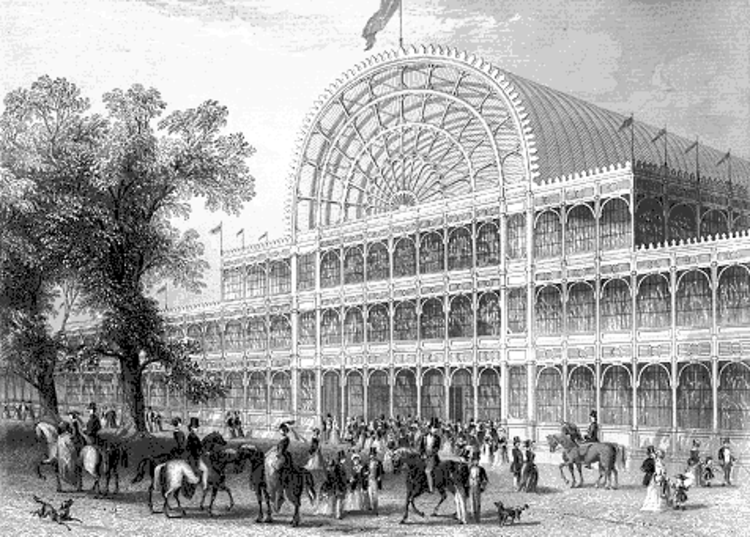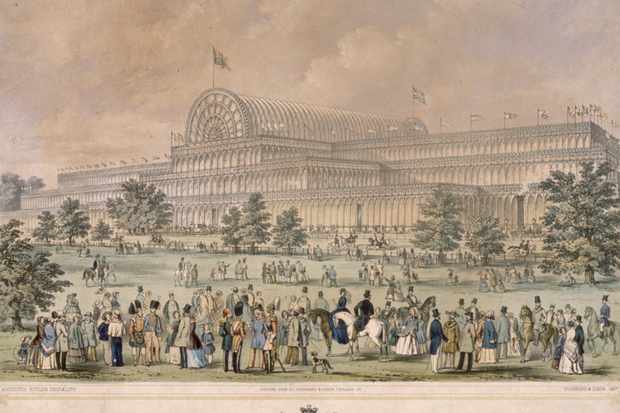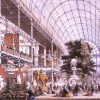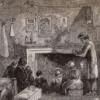The Crystal Palace
In 1849 Prince Albert who was president of the Royal Society of Arts desired to create an intricate exhibit that allowed both Britain and other international exhibitors the opportunity to showcase their works and inventions. In order to house what would be known as the Great Exhibition of 1851 Prince Albert decided to build a new structure within Hyde Park in London. After many months of planning, and diligently reviewing architectural submissions Prince Albert selected Sir Joseph Paxton's design, and construction began. The structure was intricately made of cast iron and glass which allowed light to shine in from all angles. The ground space of the building was so large it allowed for eight miles worth of gallery and exhibition tables to be on display. The Crystal Palace was completed within five months, and on May 1, 1851 the Great Exhibition was open to the public. The exhibit would remain open a total of five months (ended October 11, 1851), and drew in over six million visitors to its doors. Patrons were able to observe new developments in engineering, intricate works of art, and artifacts from all over the world. Half of the exhibit was dedicated to British works while the other half was split amongst visiting exhibitors from places such as America, India, and Denmark. Visiting exhibitors aimed to display the splendor of their countries. Many exhibits were filled with precious stones and gold. The British exhibit even allowed patrons to view the recently obtained Koh-I-Noor diamond. Many of the exhibits displayed cultural displays which consisted of people performing tasks while wearing "traditional" clothing. Within her journal Queen Victoria stated that the grand opening of the exhibition marked one of the greatest and most glorious days of her and Prince Alberts lives. Proceeds from the exhibit were used to fund the development of the South Kensington Museum. Once the exhibition was completed the infrastructure was disassembled and relocated to Sydenham Hill in South London. There it remained until eventually burning down in 1936.

Content Source:
https://www.britannica.com/topic/Crystal-Palace-building-London
Parent Map
Coordinates
Longitude: -0.165730300000



